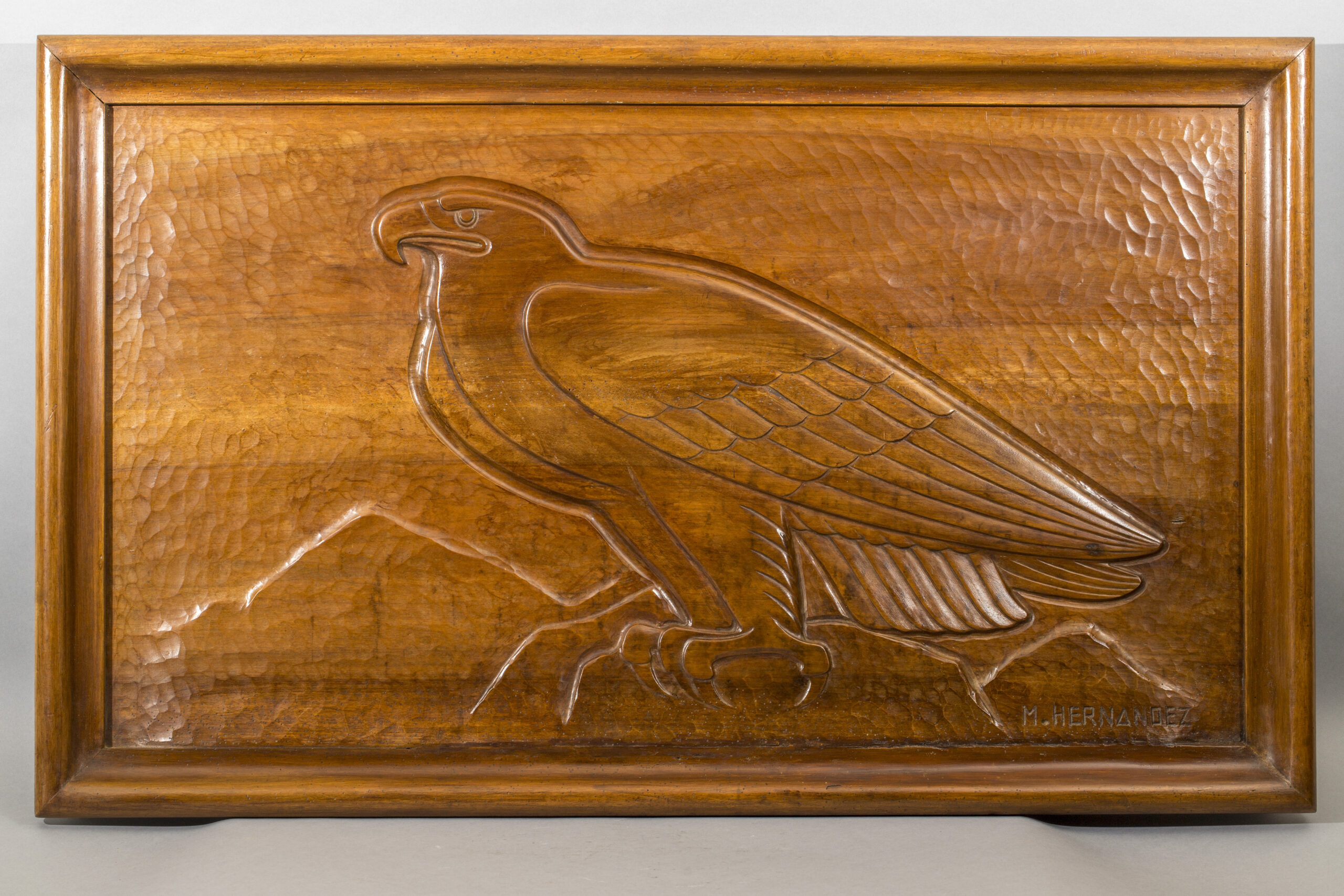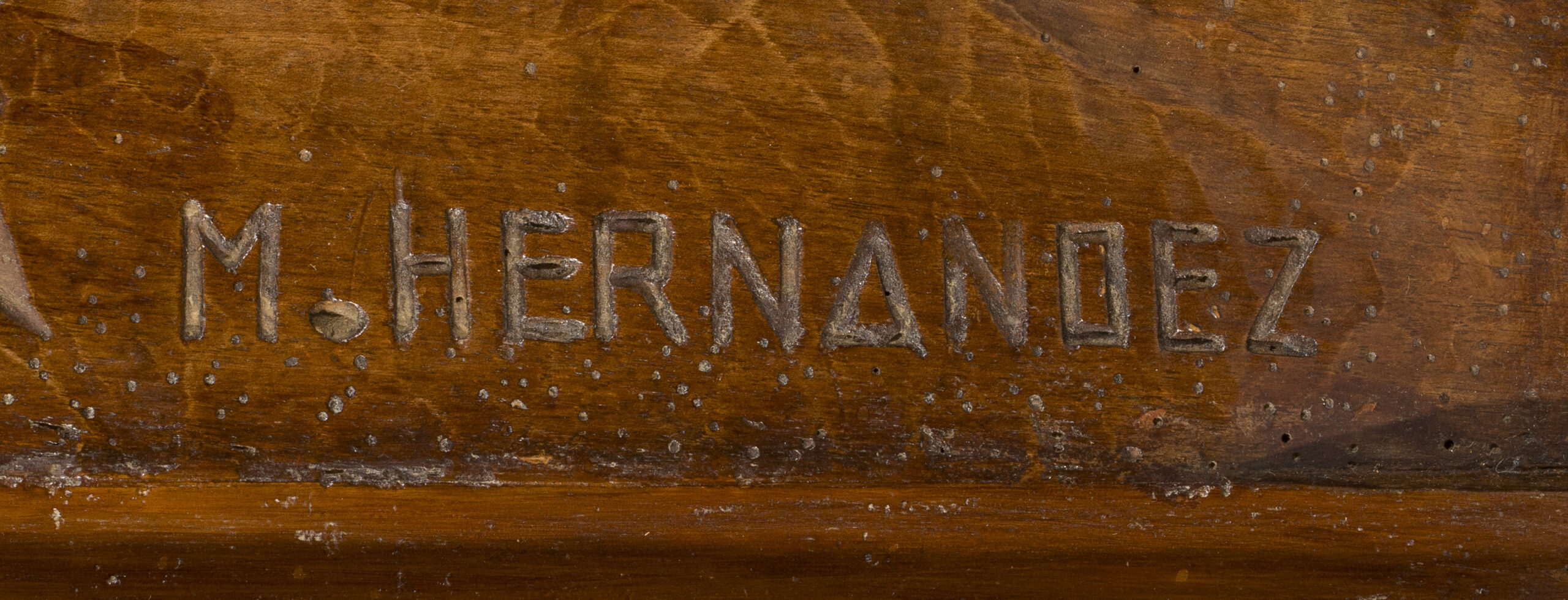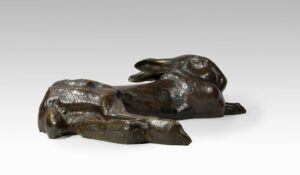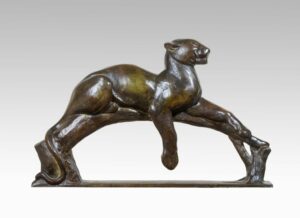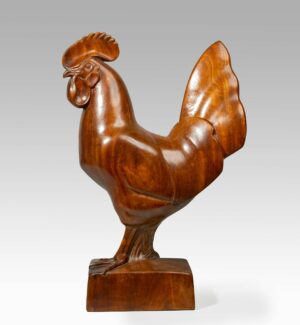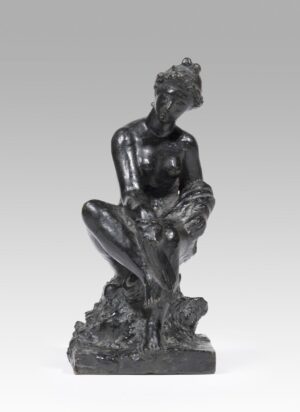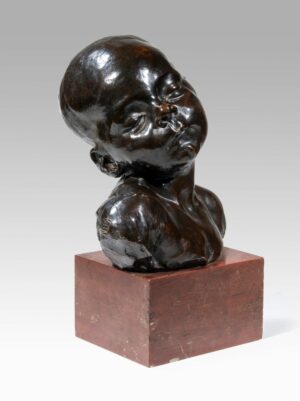Description
Although Mateo Hernández is primarily known for his animal sculptures in hard stone, he also practised wood carving. In fact, it was with a large carved wooden crucifix that he first gained recognition, and it was in this medium that he created his first work upon arriving in France: a small deer in mahogany.
The types of wood he chose were selected with great care. He favored dense, hard materials—those that presented significant challenges to work with. As a result, he primarily used ebony, mahogany, and oak. Our panel, however, is made of walnut, a relatively hard wood but one that Hernández rarely used. It is known to be delicate to work due to its tendency to crack.
Another distinctive feature of our sculpture is that it is a bas-relief, not a sculpture fully in the round. It depicts an eagle perched on a rock, scanning its surroundings with its keen gaze. By focusing on lines and smooth forms, Hernández captures only the essential contours and significant volumes of the animal’s anatomy, excluding any unnecessary details. The robustness of the forms and the majestic yet fierce attitude of the bird of prey are beautifully rendered.
Hernández drew his models from the Jardin des Plantes, which he visited daily. Like François Pompon, it was poverty that guided him in his vocation, leading him to this menagerie that offered numerous models at little cost. However, unlike Pompon, who preferred to depict animals in motion, Hernández favored capturing them at rest, in stillness, seeking to express life in immobility.
He soon developed a particular interest in birds of prey, especially eagles, of which he carved several species. A photograph from 1919 shows him at the Jardin des Plantes, sculpting a Bonelli’s eagle directly from the model, using a block of diorite secured with ropes over a box mounted on casters. In 1926, he carved a royal eagle in schist, and in 1927, an imperial eagle in granite. The stylization of the wings in our wooden eagle is to be found in these two later models as well. Later, when he moved to Meudon in 1928, he surrounded himself with a small menagerie, including an eagle.

